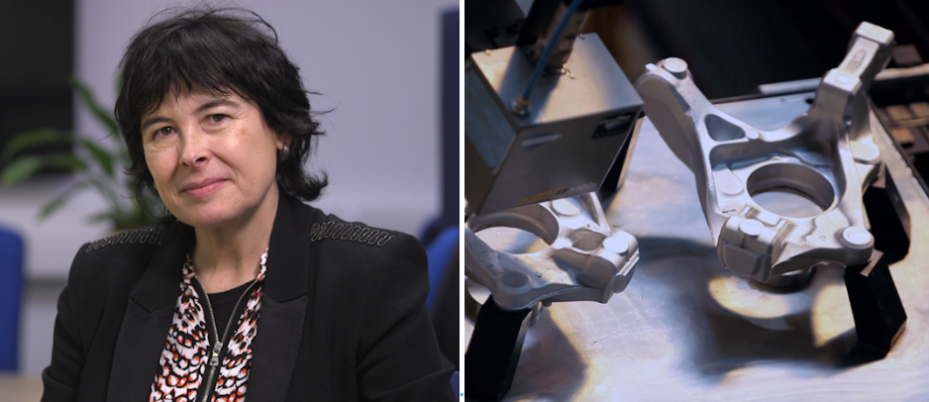Ms Bakartxo Egilegor is a senior researcher at IKERLAN and coordinator of the research project ETEKINA. She talks about how to reuse waste heat when producing aluminium components and how this could be a blueprint for all energy-intensive industries.
What are you currently working on?
Egilegor: There is a huge quantity of thermal energy – or heat – that is released into the atmosphere in energy-intensive industries. Our EU-funded project ETEKINA aims to reduce this by using a heat pipe based heat exchanger to collect and reuse the energy within the industrial processes where required. The heat pipe is, in fact, a more compact heat exchanger that transports heat from one point to another in a very efficient way. We plan to test this technology in real-life industrial facilities.
Heat pipes for heat recovery have been known for more than 40 years. Why are they only now being rediscovered as a tool to improve processes in energy-intensive industries?
Egilegor: Well, this technology is nowadays massively used for cooling electronic devices, but for industrial heat recovery the cost has been the main barrier. The first prototype for industrial heat recovery was built in 2001 and over the last 10 years heat pipes have become much cheaper and their designs have been improved. That is why the technology is now becoming attractive for energy-intensive industries.
Why is your employer IK4-Ikerlan involved?
Egilegor: IK4-Ikerlan is a non-profit technology research institution based in the Basque Country, in norther Spain, where many energy-intensive industries are located. Our mission is to help improve the competitiveness of these industries, transferring our knowledge and providing them with technology. We have been supporting our industries in different technological areas for more than forty years. In the energy efficiency area, we are specialists in electrical and thermal management solutions. Our technological offer includes the recovery and reuse of heat for industry as well as efficient heat transfer equipment such as exchangers, heating and cooling systems, for example.
Are you cooperating for ETEKINA with an on-site industry?
Egilegor: We are working with Fagor Ederlan, a manufacturer of aluminium components for the automotive sector, to analyse energy consumption across their processes. In one of their plants they use two heat treatment processes: one at a higher temperature and one at a lower one. So, we assumed that there was the opportunity to use the heat released from the hotter furnace for the low-temperature furnace. The challenge here is to introduce the heat recovery and transfer system into the production process without lowering the quality of the parts being manufactured. As part of the ETEKINA project this is being approached in close cooperation with Fagor Ederlan and its furnace supplier Insertec.
What kind of savings do you expect?
Egilegor: We are measuring flow rates and temperatures of the fumes in the high-temperature furnace and measuring the second furnace’s gas consumption. Based on these measures we have estimated a potential recovery of around the 42% of the sensible energy contained in the hotter furnace’s fumes. Thus, the second furnace’s energy consumption can almost be eliminated.
So, the savings are quite substantial.
Egilegor: Yes. But there is also another important aspect: if the results are successful, this solution can be replicated in the other Fagor Ederlan plant. We are going to model the furnace and develop methods to replicate the solution in other cases. As our mission is to transfer knowledge to the industry, we will look for other similar cases where this technology solution can be applied, in order to extend the impact of this outcome.
Do you have a long-term vision? Will heat pipe technology make a change in energy-intensive industries?
Egilegor: These industries do want to reduce their high energy consumption. But to invest in new energy-saving technologies, they need to see concrete examples, success stories. ETEKINA will provide them with three success stories: in the non-ferrous metal sector, represented by Fagor Ederlan, in the ceramic sector, represented by Atlas Concorde in Italy and in the steel sector, represented by Metal Ravne in Slovenia.
Do you think this technology could also work beyond the three sectors?
Egilegor: Once the technology has been shown to actually recover waste heat, industries will say, ‘I want this, too. I would like to do the same.’ They will say so when they see it happening both in similar cases in other sectors, and in other factories in their own sectors. Energy consumption is a concern for industries as it influences competitiveness. But for me it’s also about the benefits for society; and the ETEKINA project will show people how to optimise energy use.

